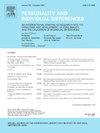Machiavellianism and suicide risk in adolescent earthquake survivors: Dual effects via fear of injury/death and posttraumatic stress symptoms
IF 3.5
2区 心理学
Q1 PSYCHOLOGY, SOCIAL
引用次数: 0
Abstract
Suicide is common among adolescents following natural disasters, and negative personality traits have been identified as risk factors for suicide. However, few studies have adopted a life history perspective to examine the relationships between Machiavellianism, trauma-related emotions, psychopathology, and their associations with suicide risk in adolescent survivors. We surveyed 508 adolescents (266 females [52.4 %]; Mage = 14.09 [SD = 1.53]) three and a half years after the Ya'an earthquake. We surveyed Machiavellianism, fear, and posttraumatic stress symptoms (PTSS) at baseline, and surveyed suicide risk at both baseline and one-year follow-up. The results indicated that Machiavellianism was positively associated with suicide risk via the simple mediation of fear of injury/death and PTSS, respectively. Moreover, Machiavellianism showed a negative association with suicide risk through the serial mediation of fear of injury/death and PTSS. Specifically, these effects primarily operate through the intrusion and hyperarousal clusters. In summary, Machiavellianism showed dual effects on suicide risk in adolescent earthquake survivors. This study provides new insights for identifying and intervening the suicide risk in adolescents following natural disasters.
青少年地震幸存者的马基雅维利主义和自杀风险:通过对伤害/死亡的恐惧和创伤后应激症状产生的双重影响
自然灾害发生后,青少年自杀现象很普遍,而消极的人格特质被认为是自杀的危险因素。然而,很少有研究采用生活史的角度来考察马基雅维利主义、创伤相关情绪、精神病理学及其与青少年幸存者自杀风险之间的关系。我们调查了508名青少年(266名女性,占52.4%);[SD = 1.53])在雅安地震后三年半。我们在基线时调查了马基雅维利主义、恐惧和创伤后应激症状(PTSS),并在基线和一年随访时调查了自杀风险。结果表明,马基雅维利主义分别通过伤害/死亡恐惧和创伤后应激障碍的中介作用与自杀风险呈正相关。此外,马基雅维利主义通过伤害/死亡恐惧和创伤后应激障碍的连环中介作用与自杀风险呈负相关。具体来说,这些影响主要是通过侵入和过度唤醒集群来运作的。综上所述,马基雅维利主义对青少年地震幸存者的自杀风险有双重影响。本研究为自然灾害后青少年自杀风险的识别与干预提供了新的思路。
本文章由计算机程序翻译,如有差异,请以英文原文为准。
求助全文
约1分钟内获得全文
求助全文
来源期刊

Personality and Individual Differences
PSYCHOLOGY, SOCIAL-
CiteScore
8.50
自引率
4.70%
发文量
577
审稿时长
41 days
期刊介绍:
Personality and Individual Differences is devoted to the publication of articles (experimental, theoretical, review) which aim to integrate as far as possible the major factors of personality with empirical paradigms from experimental, physiological, animal, clinical, educational, criminological or industrial psychology or to seek an explanation for the causes and major determinants of individual differences in concepts derived from these disciplines. The editors are concerned with both genetic and environmental causes, and they are particularly interested in possible interaction effects.
 求助内容:
求助内容: 应助结果提醒方式:
应助结果提醒方式:


